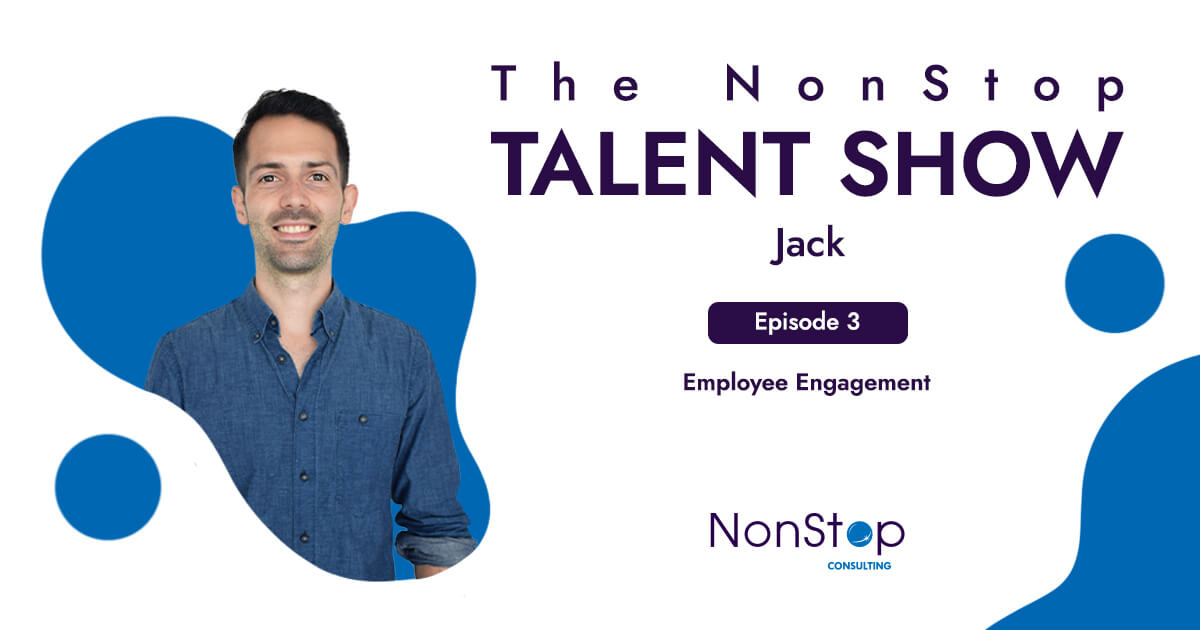It’s no secret high employee engagement has a positive impact on business outcomes. But it’s not always easy to get it right.
As NonStop Director Jack Stevens said, there are a lot of interpretations of what engagement is and based on what some companies do, it “conjures up images of cycling around the office and bean bags in the corners”.
But is this really engagement?
Jack was joined in the latest episode of the NonStop Talent Show podcast by Vishwas Muthyala, who is part of the HR Leadership team at Tata Technologies, to discuss employee engagement and why companies should care about it.
“Until the machines take over, we don’t have any choice… fundamentally talking about how do you get the best out of your people is going to be an essential question that I don’t think is going to go away any time soon,” he said.
Among many topics, four themes stand out from the conversation about things to focus on, and things to avoid when it comes to employee engagement.
Communication is key
It’s important to make sure communication goes two ways, to close the loop. Rather than just survey employees to gauge their level of engagement, report back to them on what you’re doing based on their feedback, and that in itself can improve engagement.
Following on from that, it’s important to communicate with your wider talent pools to both attract and retain engaged people.
As Jack said: “I think there’s a hunger right now for people wanting to be in a business where you don’t just do x job, it’s actually about changing the world in some way.”
He said the ‘great resignation’ was evidence that people are focusing on the value of the work they do from a societal point of view and the challenge for companies will be in communicating that
Avoid becoming gimmicky
With the actions you take based on employee feedback, it’s important to make sure they are right for your company and aligned with your culture or you risk coming across as inauthentic. Especially if you hire experienced people from other companies, you will get a lot of comments about what happened in their previous companies, and while it’s good to get input of ideas, you can’t just blindly follow them, you need to make sure it’s something that aligns with your company or they could be seen purely as gimmicks.
According to Vishwas: If you try and simply copy ‘Fridays around the pool table’, for example, if it’s not something that people have experienced in your company for a prolonged period of time, it won’t work.
“There are companies that use every gimmick available and I think you can use engagement in a cynical way really to try and attract people but it doesn’t really mean anything at the end of the day, it’s not authentic,” said Jack.
You can’t solve everyone’s problems
While it might seem like a good strategy to listen to every single person’s feedback and give them what they need to increase their engagement, that could not only overwhelm HR or the people responsible for engagement but also have the opposite effect on the people themselves. Of course, it’s still important to talk to everyone, but eventually, you have to consolidate the feedback to see what larger-scale actions you can take.
As Jack said, “if you’re doing surveys of your employees or even customers, you’re just going to get a wishlist, and you can’t be everything to all people, you can’t do everything.”
However, as Vishwas said, you also need to understand that some people are more outspoken than others, which can skew the feedback on which you are making engagement-related decisions.
“What you should do is look at the feedback you are getting that is giving you actions, at the end of the day you have to take that as being representative of a large group, and you make sure there is enough of that feedback coming through for it to be considered representative,” he said.
Leverage technology, but complement it with humanity
AI and other tech tools can be a huge help in gathering data on employees that can help inform engagement-related activities, but as Vishwas said, “at the end of the day you have to complement that with human intelligence, on the ground, conversations with employees, focus group discussions, one-on-one conversations, open houses, whatever channel you choose to use, but you need to have your own direct channels to help you either validate or counter what the systems are telling you”.
If you have any questions about the content of this podcast, or maybe you would like to be a guest, let us know via [email protected] or find us over on LinkedIn. If you have general questions for our wider team, you can drop us a line here.
Listen and subscribe here:





